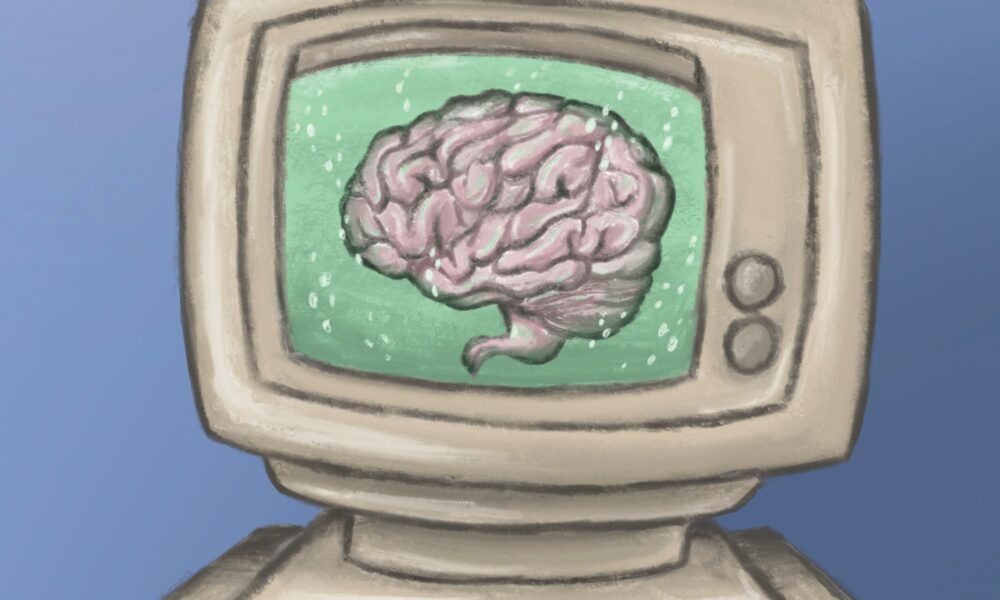Artificial intelligence (AI) has taken the world of healthcare by storm, revolutionizing the way physicians diagnose and treat medical conditions. The Feindel Brain and Mind Seminars featured radiology—an area that AI has impacted substantially—during its Sept. 13 event hosted at The Montreal Neurological Institute-Hospital. Saurabh Jha, Associate Professor of Radiology at the University of Pennsylvania, discussed the use of AI in the detection of abnormalities in head Computed Tomography (CT) scans.
Radiology uses medical imaging, which takes pictures of bodily organs, to assist in the diagnosis and treatment of diseases. AI algorithms can learn how to spot irregularities in these images, potentially automating tasks that have been traditionally carried out by radiologists.
In a paper that Jha reviewed, researchers trained an AI algorithm to identify abnormalities in head CT scans, such as hemorrhages, with remarkable accuracy. The scientists trained the algorithm on nearly 40,000 patient scans and then tested on another 10,000. A metric called the ‘area under the curve’ measured its performance, gauging whether it tended to overcall or undercall abnormalities.
“So what this algorithm did was reprioritize. There were studies that you thought weren’t important, but were brought to the top of the list [and that reprioritizing] translated [into] the time to diagnose [being] substantially reduced,” Jha said. “What stroke[s] [have] made us understand is there’s no point [in] waiting for the patient to get to you, you must try and get to the patient.”
The innovative nature of AI extends beyond the confines of the hospital, as imaging equipment and AI can be embedded in ambulances that can reach the patient swiftly, improving patient outcomes significantly.
“There is much greater effectiveness, effectiveness that comes from promptness of diagnosis and promptness of treatment. You can’t give treatment promptly, unless you’ve diagnosed promptly,” Jha said.
Although the question of whether AI will replace radiologists lingers, the answer, according to Jha, is coexistence. Radiologists and AI can work synergistically, with AI handling routine tasks while radiologists focus on complex cases.
“So there is of course what I would call the replacement fallacy [with physicians in North America being] worried about AI replacing radiologists, [while] in most of the rest of the world, there aren’t any radiologists to replace,” Jha said.
For countries with a shortage of radiologists, AI could present a remarkable opportunity to improve healthcare without the concern of displacing existing human jobs. Jha expanded on this potential advantage by referring to a region in Northern India known for its high incidence of stroke and lack of physicians.
“There is no AI replacement, there is nothing else there. It’s AI or nothing. And often, AI does a very good job of giving something pretty good,” Jha explained.
Jha then acknowledged that the acceptance of AI in radiology varies between nurses, doctors, and administrators. AI vendors and hospital management may view it as a way to enhance efficiency and revenue, whereas neurologists may be more cautious and concerned about the effects of false positives or missed cases.
The trade-off between sensitivity and specificity is a crucial consideration in AI adoption. Vendors claim that a few false positives are worth the benefits of true positives. However, false positives can disrupt workflow and potentially impact other diagnoses, as well as deeply affect the lives of misdiagnosed patients. Indication drift in healthcare also poses an issue because the use of AI in certain diseases’ imaging may increase its usage in other conditions for which AI has not necessarily been validated.
“When you make something easier, you get more of it, that’s obvious, but what’s sometimes counterintuitive is that the net gain from that is a little lower than what it would have been had you maintained some barriers,” Jha said.
In Jha’s view, a hybrid model where AI accompanies radiologists would be ideal. This approach would maximize the strengths of both, ensuring high-quality patient care while optimizing efficiency and reducing human error.









